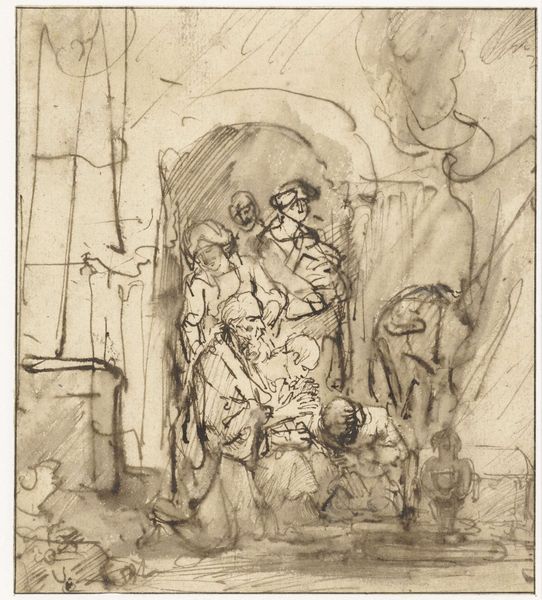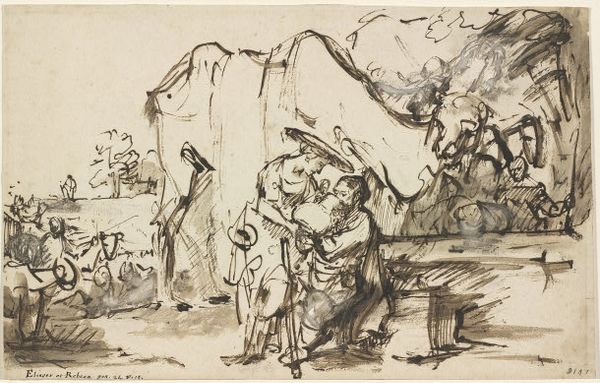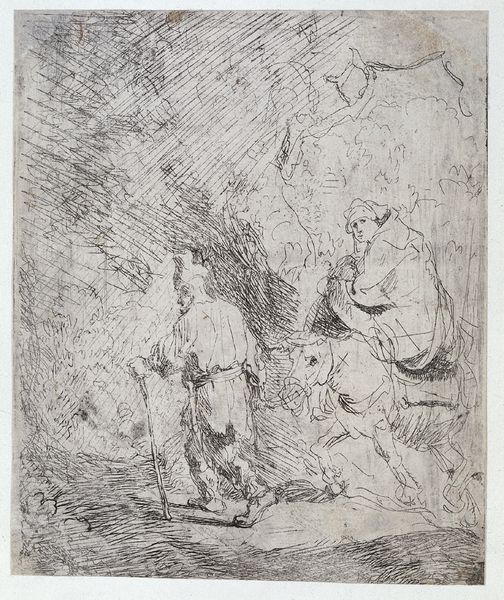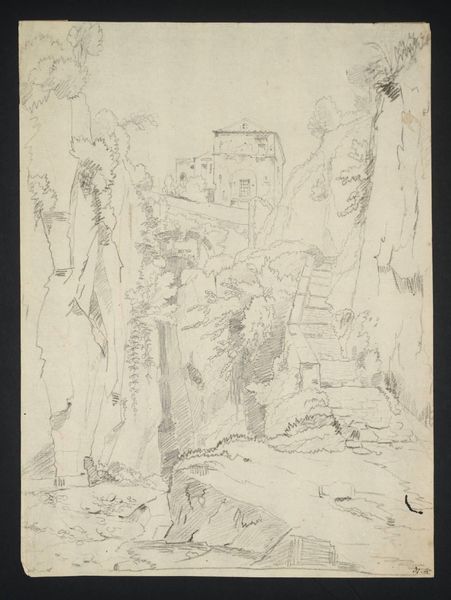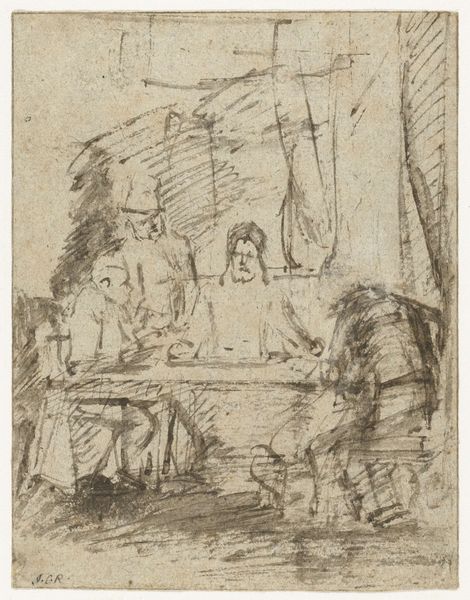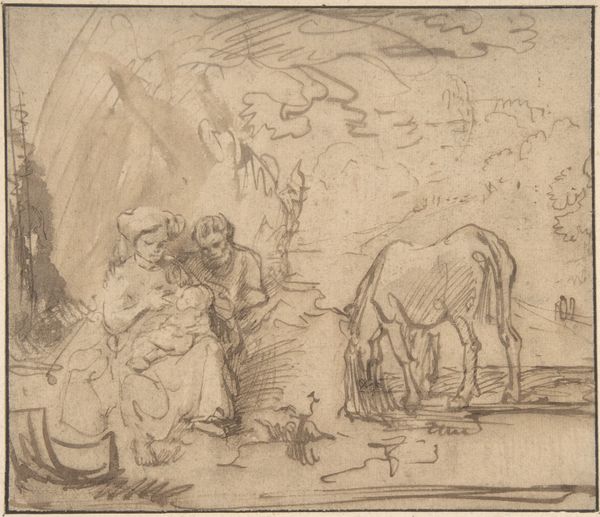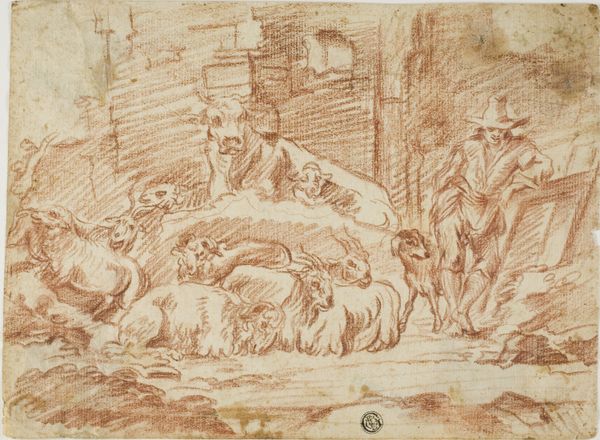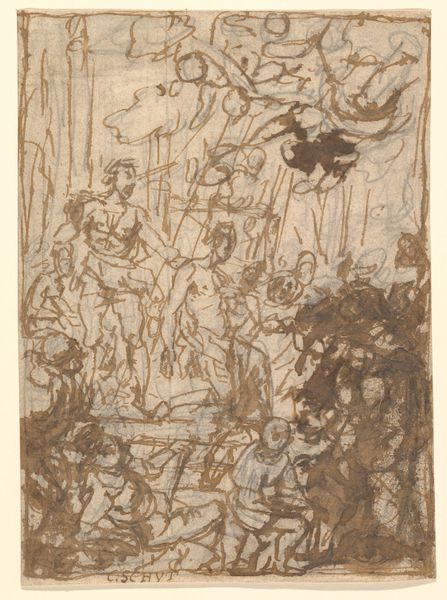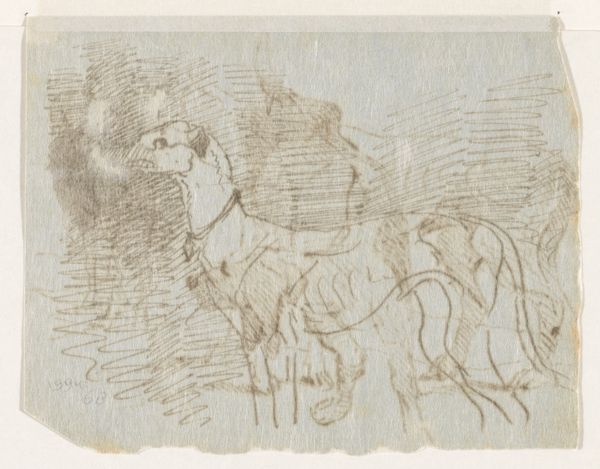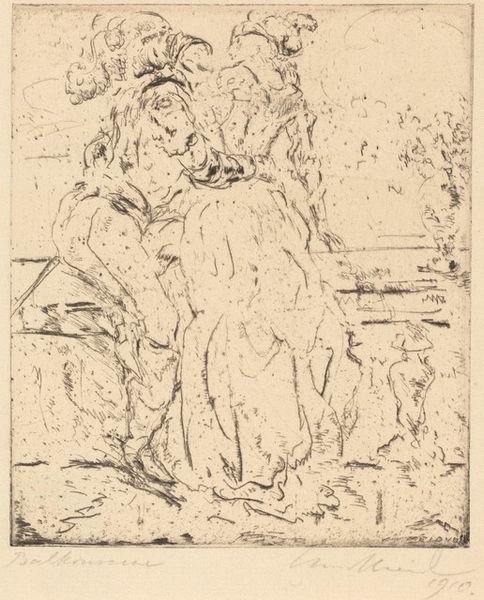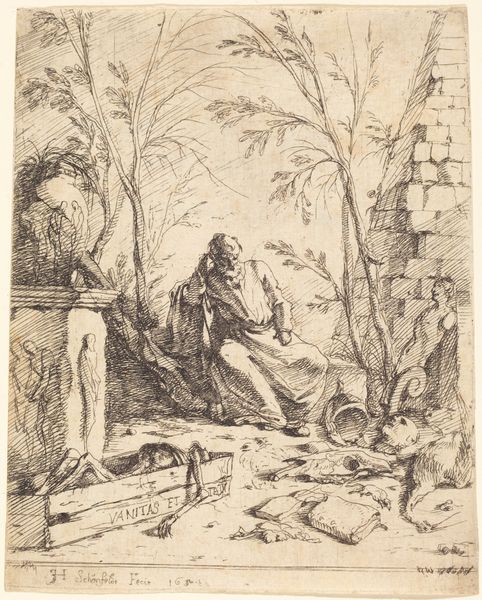
drawing, ink
#
drawing
#
narrative-art
#
baroque
#
pencil sketch
#
figuration
#
ink
#
history-painting
Dimensions: height 222 mm, width 184 mm
Copyright: Rijks Museum: Open Domain
Curator: Here we have Rembrandt van Rijn’s “Daniel in the Lions’ Den,” a pen and ink drawing created around 1650. It’s currently housed here at the Rijksmuseum. Editor: My initial reaction is the dynamism of it all. The rough sketch creates a swirling sense of unease, even as it portrays the biblical scene of Daniel's protection. Curator: Indeed, and it’s useful to see this work through a lens of power and piety. Daniel, a figure of unwavering faith, defies a king's decree and continues to pray, thus landing himself in this precarious situation. It highlights religious persecution, and Daniel becomes a symbol of resistance against unjust power. Editor: But, just looking at the way Rembrandt uses ink wash, notice the spatial ambiguity he creates. It’s almost dizzying, isn’t it? The foreground feels quite clear, especially around Daniel himself, yet everything behind seems to recede and dissolve. This swirling, layered application seems meant to disorient us and amplify the feeling of uncertainty in a perilous setting. Curator: Absolutely. Furthermore, Rembrandt situates the Jewish figure of Daniel, as a protagonist, in a complex relationship with a society often exclusionary of Jewish identity. It makes us think about representation, marginalization, and resilience within artistic narratives of that period. The focus is Daniel, rather than the spectacle of his supposed demise. Editor: If we consider the architectural setting though, which appears almost abstracted. Could this lack of detail draw focus onto Daniel’s form? Or perhaps invite more symbolic readings of his ordeal. The artist focuses primarily on Daniel as the main subject of study—rendering his fear. It is very effective use of chiaroscuro, considering this rendering only uses ink wash. Curator: And, in turn, prompts reflection on the enduring relevance of these narratives for communities confronting oppression today. Art offers tools for understanding, advocacy, and social transformation. It asks us how these past narratives resonate with our present struggles. Editor: I see. I am left contemplating on Rembrandt’s artistic skill, while appreciating the intense drama that he successfully conveyed with mere strokes. Curator: Yes. And for me, it’s a continued exploration of faith, resistance, and the narratives we tell about power, then and now.
Comments
rijksmuseum about 2 years ago
⋮
Daniel was awarded a high court position by the Babylonian king Darius. His envious enemies devised a ruse to have Daniel thrown to the lions; however, the wild creatures left the praying Daniel unharmed. It is clear that Rembrandt had already actually seen and drawn real lions. The little figure all the way at the top is Darius, evidently relieved to find Daniel still alive.
Join the conversation
Join millions of artists and users on Artera today and experience the ultimate creative platform.
